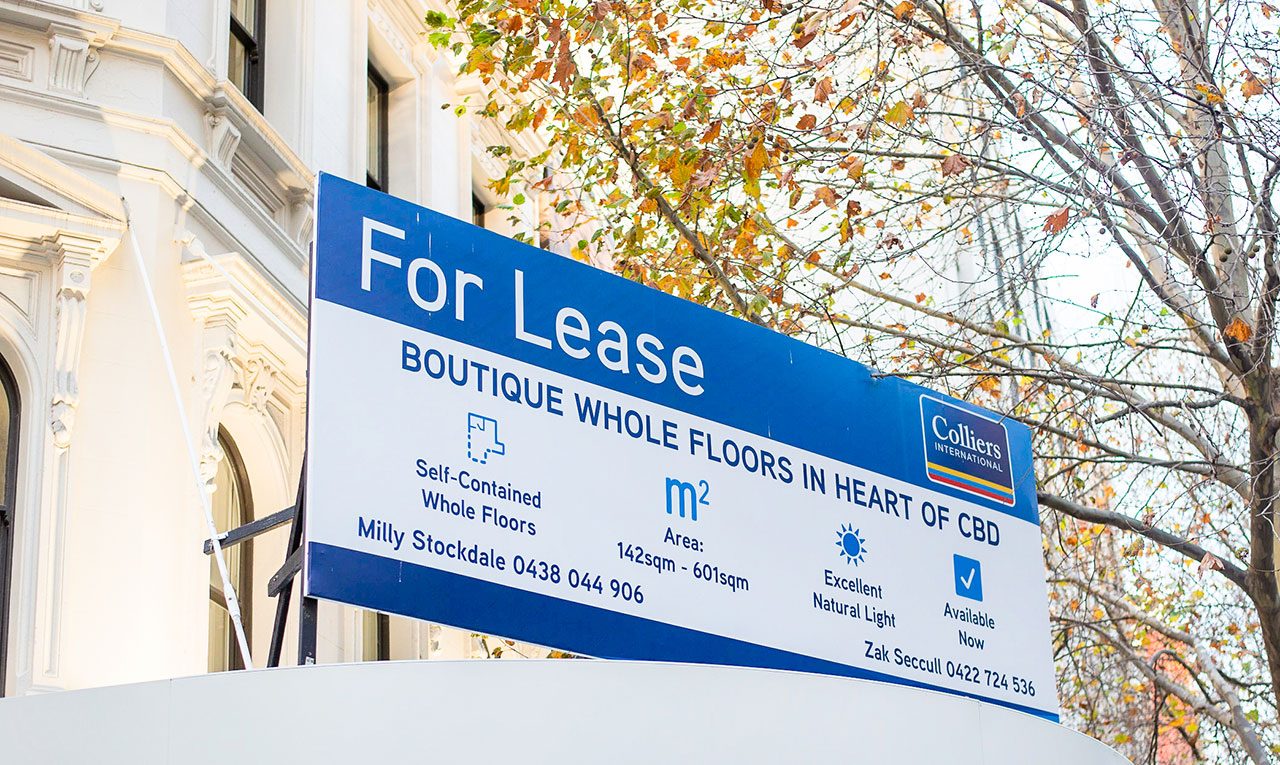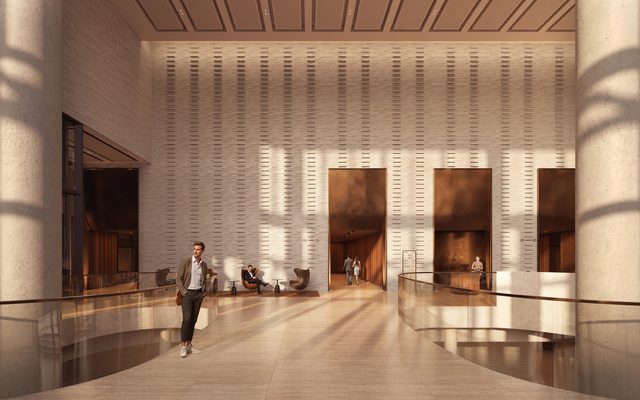This article is from the Australian Property Journal archive
AUSTRALIA’S CBD office markets will not see space utilised at the same level as before the coronavirus pandemic, as part of a structural decline in demand even once conditions normalise, according to global financial services firm Fitch Ratings.
Fitch’s rated office REITS – Dexus, Mirvac, GPT and Stockland – have already seen portfolio occupancy rates dip, although remain above 90%.
Fitch ratings analyst Kelly Amato said this indicates that businesses are reducing their workspace footprints in line with more flexible working arrangements, which Fitch Ratings expects many companies to adopt once Australia’s vaccination rollout is complete.
“We expect utilisation to increase further once vaccination targets are met and the country’s longer-term health and safety requirements have been determined. However, we do not believe utilisation will return to pre-pandemic levels, with employees’ preference for workplace flexibility remaining the key driver influencing the return to the office over and above the easing of government restrictions,” Amato said.
“We expect the sector to undergo significant structural change once cities reopen, with most businesses employing a hybrid working model,” Amato said, adding that “offices will remain vital for collaboration and team building”.
“We do not expect a one-for-one drop in utilisation and space requirements. Typically, collaboration spaces require more room per employee, which means that we are likely to see a reverse of recent trends of reducing space per employee. This should mitigate some of the decline in structural demand suggested by lower utilisation.”
Analysis from PAR Group estimates working from home could sap Australia’s six largest CBDs of 2.2 million fewer office workers and $1.6 billion in retail spending each year.
“These changes are likely to lead to volatility as well as a flight to quality, which should boost occupancy in higher-quality portfolios at the expense of lower-quality buildings. This, together with longer-dated leasing contracts, should stabilise income visibility for larger REITs, albeit at lower leasing rates,” Amato said.
“Mirvac and Dexus have already demonstrated this pathway, which has effectively de-risked the maturity profile of their outstanding leases past FY24, but at lower effective rents.” More than 80% of Mirvac’s vacancies are in buildings constructed before 2000.
Prime assets are better able to meet changing tenant demands towards better amenities, safety and wellbeing and have a greater ability to remodel spaces to allow for more collaboration.
“We believe such features will also be important for tenants to entice employees back to the office. As such, prime assets will help REITs claw back occupancy levels over time and maintain income visibility.”
Property Council occupation statistics show the major markets of Sydney and Melbourne saw office occupancy – the measure of offices actually being used – at just 4% and 7% respectively during August, as both cities remained in the midst of extended lockdowns.
Both cities were the only capitals to record declines in office vacancy rates in the six months to July. New supply will put further pressure on the markets. The Property Council reports that the office development pipeline in 2021 is around 1.2 million sqm, with 75% of that to be delivered in the remainder of 2021 and in 2022. Melbourne makes up 40% of the total, while Sydney comprises around one quarter.
Fitch Ratings expects lower occupancy and net effective leasing rates to continue as the market transitions to the “new normal” before stabilising.
“This phase is likely to be dominated by tenants acting upon decisions regarding their future office space, lower occupancy levels that reflect the structural decline in demand while the sector also absorbs new supply coming online, and lower net effective leasing rates, as landlords look to fill vacant space.”
Higher vacancies are pressuring effective rental rates for new or renewed leases. Dexus and Mirvac reported an increase in incentives provided over FY21, while Stockland’s average rental growth on new leases and renewals fell sharply from 18.6% in FY20 to 5.8%.
“This expectation of long-term stabilisation has supported valuations to date, however we expect there could be some expansion in capitalisation rates over the medium term as some of the effects of the shift become more visible, causing a decline in valuations.”
Structural changes in the office sector over the medium term, with longer WALEs – despite a decline in tenure during FY21 – providing some short-term protection over income generation. Dexus and Mirvac reported stable or slightly improved WALEs from FY20 levels, as they looked to de-risk their lease expiry profiles. Around 70% of both REITs’ outstanding leases will expire after FY24. GPT’s declined slightly, but is in advanced negotiations on around 75,000 sqm, nearly double the previous year. While Stockland saw a drop from 3.2 to 2.5 years, it has lower exposure to offices than the other majors.
Capitalisation rates compressed slightly compared with the prior year, demonstrating the long-term strength of the office portfolios across the REITs. Stockland reported that its capitalisation rate compressed by 0.2%, despite external valuers increasing reletting times and its incentive allowances over the short-to-medium term.
“However, we do not expect further significant compression. Instead, we forecast an expansion in capitalisation rates over the medium-term as structural changes become more visible.”
Tenants leasing less than 500 sqm are more active in the leasing market. They are less likely to be affected by large-scale flexible working arrangements and therefore have more clarity over their space needs, and are taking advantage of the higher incentives being offered by landlords. Government entities have also been more active in leasing markets.
“However, leasing activity among larger businesses appears subdued, as the companies still aim to finalise plans on how their offices will operate before deciding on the extent of changes to office size. We believe that this shows we are at the beginning of the office sector’s transition phase, with companies still in the midst of the consultation period and choosing to see out the remainder of their leases or rolling over their lease on a short-term basis to ultimately act on their plans once finalised.”




